
Shropshire is a landlocked ceremonial county in the West Midlands of England, on the Welsh border. It is bordered by Wrexham County Borough and Cheshire to the north, Staffordshire to the east, Worcestershire to the south-east, Herefordshire to the south and Powys to the west. The largest settlement is Telford and Shrewsbury is the county town.
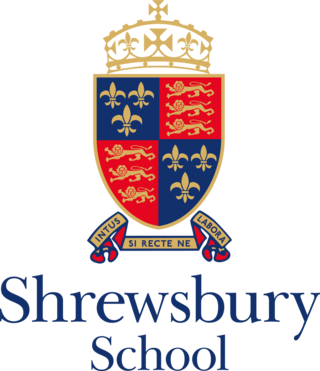
Shrewsbury School is a public school in Shrewsbury.

Oswestry is a market town, civil parish and historic railway town in Shropshire, England, close to the Welsh border. It is at the junction of the A5, A483 and A495 roads.

Shrewsbury and Atcham was a local government district with borough status in Shropshire, England, between 1974 and 2009.

The Cornovīī were a Celtic people of the Iron Age and Roman Britain, who lived principally in the modern English counties of Cheshire, Shropshire, north Staffordshire, north Herefordshire and eastern parts of the Welsh counties of Flintshire, Powys and Wrexham. Their capital in pre-Roman times was probably a hillfort on the Wrekin. Ptolemy's 2nd-century Geography names two of their towns: Deva Victrix (Chester) and Viroconium Cornoviorum (Wroxeter), which became their capital under Roman rule.

The Hunterian is a complex of museums located in and operated by the University of Glasgow in Glasgow, Scotland. It is the oldest museum in Scotland. It covers the Hunterian Museum, the Hunterian Art Gallery, the Mackintosh House, the Zoology Museum and the Anatomy Museum, which are all located in various buildings on the main campus of the university in the west end of Glasgow.
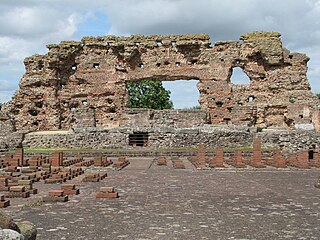
Viroconium or Uriconium, formally Viroconium Cornoviorum, was a Roman city, one corner of which is now occupied by Wroxeter, a small village in Shropshire, England, about 5 miles (8 km) east-south-east of Shrewsbury. At its peak, Viroconium is estimated to have been the 4th-largest Roman settlement in Britain, a civitas with a population of more than 15,000. The settlement probably lasted until the end of the 7th century or the beginning of the 8th. Extensive remains can still be seen.

Atcham is a village, ecclesiastical parish and civil parish in Shropshire, England. It lies on the B4380, 5 miles south-east of Shrewsbury. The River Severn flows round the village. To the south is the village of Cross Houses and to the north-west the hamlet of Emstrey.

Shrewsbury Castle is a red sandstone castle in Shrewsbury, Shropshire, England. It stands on a hill in the neck of the meander of the River Severn on which the town originally developed. The castle, directly above Shrewsbury railway station, is a Grade I listed building.
The town of Shrewsbury in Shropshire, England, has a history that extends back at least as far as the year 901, but it could have been first settled earlier. During the early Middle Ages, the town was a centre of the wool trade, and this was a peak in its importance. During the Industrial Revolution, comparatively little development took place in the town, although it did serve as a significant railway town after the development of rail transport in the area. The town today retains much of its historic architecture.
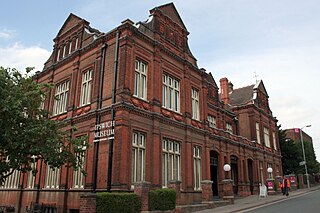
Ipswich Museum is a registered museum of culture, history and natural heritage, located in a Grade II* listed building on High Street in Ipswich, the county town of Suffolk. It was historically the leading regional museum in Suffolk, housing collections drawn from both the former counties of East Suffolk and West Suffolk, which were amalgamated in 1974.
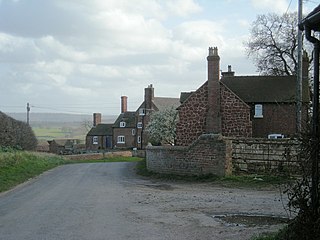
Eyton on Severn is a small village in the English county of Shropshire, east of Shrewsbury. It is located on a ridge above the northern bank of the River Severn. The significant tributary of the Cound Brook joins the Severn at Eyton, albeit on the opposite bank. Wroxeter, the village located at a ruined Roman city, is only a mile north-west of the village. The hamlet of Dryton is just east of Eyton. All lie in the parish of Wroxeter and Uppington.

Uppington is a village and former civil parish, now in the parish of Wroxeter and Uppington, in the Shropshire district, in the ceremonial county of Shropshire, England. It is situated 7.5 miles East from Shrewsbury and 4 miles South-East from Wellington. It is located within the Diocese of Lichfield, within the Rural Deanery of Wrockwardine. Uppington covers a total area of around 706 acres, much of this being open fields, used for arable and pastoral farming, as well as a small amount of local woodland. In 1961 the parish had a population of 86. On 1 April 1986 the parish was abolished and merged with Wroxeter to form "Uppington & Wroxeter".

Shrewsbury is a market town, civil parish and the county town of Shropshire, England, on the River Severn, 150 miles (240 km) north-west of London. At the 2021 census, the parish had a population of 76,782.
This is a timeline for the English Civil War in Shropshire.
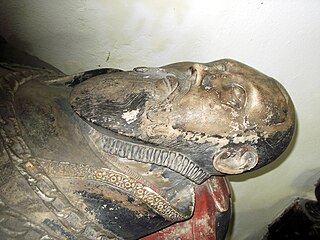
Sir Richard Newport was an English landowner and politician of Shropshire origin, prominent regionally during the mid-Tudor and early Elizabethan periods.

Edward Haycock Sr. was an English architect working in the West Midlands and in central and southern Wales in the late Georgian and early Victorian periods.

University Centre Shrewsbury is a Higher Education Institution in Shrewsbury, Shropshire.

The Old Shirehall was a municipal facility in Market Square, Shrewsbury, Shropshire. It was demolished in 1971 to make way for a retail and commercial centre.
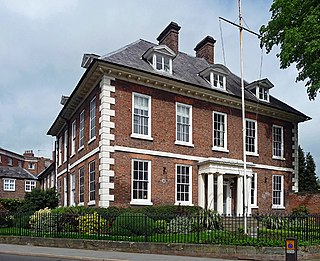
Newport House, formerly the Guildhall, is a former municipal building in Dogpole, Shrewsbury, England. It is a Grade II* listed building. The boundary wall is separately listed.
























